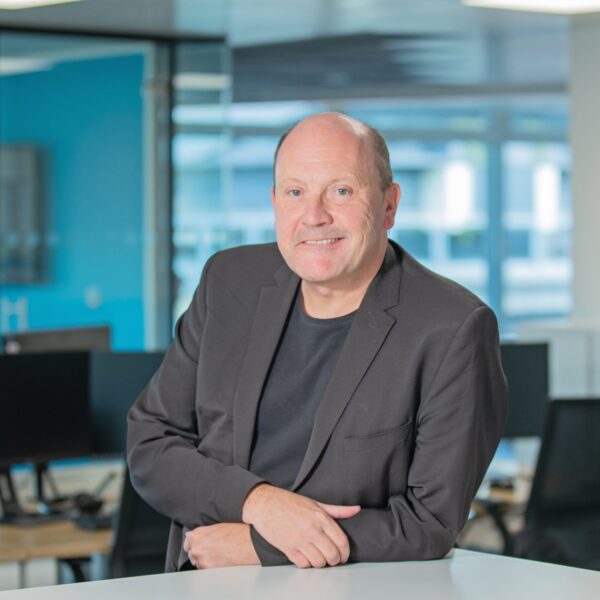Insight
BCO Conference 2023: Shifting perceptions in office design
16 Jun 2023

George Brennan
Director
With the role of the workplace continuing to shape the built environment around us, this year’s British Council for Offices (BCO) Conference gave ample opportunity to take stock of a rapidly evolving landscape. Here, our director of architecture, George Brennan, reflects on the key themes and takeaways from the conference and the shifting perceptions in workplace design.
Held annually, the BCO Conference in Dublin brings together occupiers, investors, developers, designers, constructors and suppliers to delve deeper into placemaking techniques that ensure our workplaces create and contribute to a sustainable and resilient future.
In a time of economic uncertainty and rising inflation, it is perhaps of no surprise to discover that in the series of talks we attended, there was a rather less optimistic short term picture. This picture is one characterised by uncertainty, of rapidly declining property valuations and a resulting flexible and short term leases – a far cry from a booming pre-pandemic landscape of 25-year leases.
This is somewhat similar to sentiments we found at property-focused event UKREiiF recently, which we explore in further detail here. Where that conference however, placed a greater focus on the challenges of supply and demand, the BCO event took a more investment-led approach to its dissection of the ‘office of the future’.
It was particularly interesting to hear from Bill Hughes, head of real assets at Legal & General in this respect. In a property market moving at such a fast pace of change, where pension funds are being rebalanced, and assets facing ‘a painful discovery’ he discussed the flight to quality and a clear concentration for L&G on retrofit as opposed to new-build projects.
At Pick Everard, we are ideally balanced to attest to both concepts, with a multi-disciplinary offering that allows us to flex our skillset dependent on the unique requirements of each project. However, there can be no denying that retrofitting is of huge significance to existing build stock, particularly where it concerns the large energy improvements that are needed from these facilities on the road to net zero.
Shifting viewpoints
Given the conference’s location, the picture was naturally contrasted from both a UK and Ireland perspective. In the UK but particularly London, there is vested interest in re-evaluating existing stock to meet modern sustainability standards, given the age and depth of its infrastructure. The business sentiment in Ireland was differentiated by a greater emphasis on new-build projects of scale and longevity which looked to learn lessons from a world-wide perspective. Ericsson, IBM and LinkedIn were all held as businesses committed to new investment of workplace accommodation in Dublin city.
In a discussion entitled ‘Building Places that Inspire Communities and People’, projects from developers Hines and IPUT reflected a more buoyant, optimistic and long-term view of the workplace. It was a perspective formed by the creation of communities and the changing perceptions of the role the workplace plays in our lives. Tours for example, were offered of Hines’ new Central Plaza development – a combined 166,700 sq ft offering of office, food, shopping and rooftop space, designed to encourage workers to enjoy more quality time in a place offering a wide range of possibilities and use.
Tying into this sentiment is the ongoing ‘flight to quality’. Now, more than ever, we are seeing new workplace redevelopments held as pioneering standards in energy efficiency, as well as places that hold much greater importance to the built environment around us. The emphasis here is on placemaking, with landscaped urban squares and civic streets creating the infrastructure around developments combined into an all-encompassing environment that aims to inspire people to live, work and play.
While workplace perceptions are ever changing, and market uncertainty presenting further challenges to our day-to-day operations, it is our role, as architects and designers in the space, to stay on top of evolving trends and design spaces and places that reflect modern ways of thinking.